Writing wrongs? Women wordsmiths of the 18th and early 19th centuries
Table of Contents
The art of communication has always been important for women. Whether sharing thoughts, relating experiences, voicing opinions, giving advice or creating fictions, one vital means of communication for women in the past was through the written word. But to be a woman writer in the eighteenth or early-nineteenth centuries was not without difficulties. Although not printed until after her death in 1720, the following lines by Anne Finch, Countess of Winchelsea, give a clear indication of the problems which may lay ahead for any female writer:-
Alas! a woman that attempts the pen,
Such an intruder on the rights of men,
Such a presumptuous creature, is esteem’d,
The fault, can by no vertue be redeem’d.
They tell us we mistake our sex and way;
Good breeding, fassion, dancing, dressing, play
Are the accomplishments we shou’d desire:
To write, or read, or think, or to enquire
Wou’d cloud our beauty, and exhaust our time,
And interrupt the Conquests of our prime:
Whilst the dull manage, of a servile house
Is held by some, our utmost art, and use.
(From the poems of Anne Finch, Countess of Winchelsea, 1903 edition)
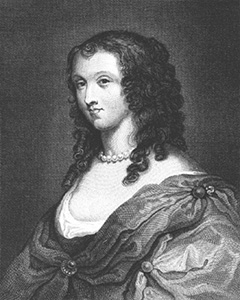
Aphra Behn - Engraving after a portrait by Mary Beale
Throughout the eighteenth century and beyond, women writers had cause to reflect on the accuracy of Anne’s words. A woman’s position in life was defined by her role in relation to men. She was a wife, mother, sister or daughter – but rarely considered as an individual in her own right. The ideal woman was supposed to be a pure, virtuous, submissive and gentle creature who never drew attention to herself. Women who transgressed this ideal could be treated harshly. When, in the late 17th century, Aphra Behn wrote successfully for the theatre, it was not long before she was criticised for lewd writing and her behaviour linked to the prostitutes who also sold their wares at the theatre. It was not considered appropriate for a respectable woman to draw attention to herself in such a public way, let alone make a profit from it. Even those females who read ‘frivolous’ novels, particularly those written by women, may be considered loose women. James Fordyce, a renowned conduct book writer, stated that ‘She who can bear to peruse them must in her soul be a prostitute, let her reputation in life be what it will’. (Sermons to Young Women, 1766)
Women and learning
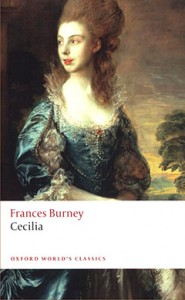
Fanny Burney’s novels are enjoying a renaissance. Oxford World’s Classics edition of Cecilia, or Memoirs of an Heiress
Women writers were not always taken seriously; after all they did not have the education, legal status and social standing that men enjoyed. Only the most privileged women may sometimes receive an intellectual education alongside being tutored in the accomplishments needed for a role as wife, hostess and mother. A respectable lady was expected to acquire the social graces, to be able to join in polite conversation, to dance, to have a modicum of musical and artistic training, and perhaps to have a little geography and French; these were basics on the curriculum. Frances (Fanny) Burney wrote scathingly of men’s opinion of women in her play, The Woman Hater (1800/2), ‘Women ought to be ashamed of talking much jargon. What do they know? And what ought they to know? Except to sew a gown and make a pudding?’
Lacking access to formal education, but still desiring knowledge and erudition, many women made claims to be self-educated. Mary Wollstonecraft had taught herself languages with the aid of a dictionary and, like several other women writers, Clara Reeve helped those who wished for guidance by including a reading list in her novel of 1791, School for Widows. Even so, women were generally advised to ‘Hide your Learning’ and such comments as, ‘I wonder which one of her books will teach her to be a housewife’ were not unknown. (Sarah Fielding, The Adventures of David Simple, 1744). As early as 1739 an anonymous verse had pointed out:
Now all philosophers agree
That WOMEN should not LEARNED be
For fear that as they wiser grow
More than their husbands they should know
This idea was repeated in various forms throughout the century, and Frances Burney too commented on the state of affairs by remarking, ‘Woman is left out of the scales of human merit only because they dare not weigh her.’ (The Wanderer, 1814)
Women pick up their pens …
Despite the difficulties facing them, women did begin to publish their writings, some becoming so successful that they could even be considered usurping rivals by some male writers. In Persuasion (1817) Jane Austen had referred to the male domination of published writing, ‘Men have had every advantage of us in telling their story. Education has been theirs in so much a higher degree; the pen has been in their hands’. An example of this resented intrusion into male territory had occurred as early as 1648 when one writer, Elizabeth Avery, had been severely criticised by her brother in a letter: ‘Sister, your Printing of a book, beyond the custom of your sex, doth rankly smell.’
One clever authoress, Charlotte Smith, pointed out that a very successful method of attacking someone was to ignore the validity of her ideas and make the attack much more personal. ‘Where sound argument fails, abusive declamation is always substituted, and it often silences where it cannot convince.’ (Desmond, 1792) And it was easy to belittle the efforts of intelligent women who could never hope to live down to contemporary womanly ideals. You could criticise them for being unfeminine, you could criticise them for their lack of education and you could even question their mental health. When Elizabeth Griffith published her first play, Amana, the Critical Review of March 1765 mocked her, saying, the writer ‘seems to have a fine lady’s disease, the vapours; as appears by her fancying herself a POETESS, and her performance a dramatic poem.’ It was never performed. When Charlotte Dacre had written about a femme fatale in her novel, Zofloya, the Literary Journal of June 1806 commented ‘Ladies of her description… have the seeds of nonsense, bad taste and ridiculous fancies early sown in their minds… That our fair authoress is afflicted with the dismal malady of maggots in the brain is alas, but too apparent, from the whole of her production…. This malady of maggots is rendered more dreadful by its being infectious… it might be a charitable thing to have a hospital for the reception of these unfortunate people while under the influence of the disease…’
Just as Aphra Behn had been compared to a prostitute, another way to belittle the works of women writers was to focus on any of their sexual behaviours that deviated from the norm. When it was discovered that Mary Wollstonecraft was an unmarried mother, some of her friends abandoned her in order to preserve their own purity - the writer Elizabeth Inchbald being just one. The problem became far more widespread after Mary’s death when her husband published a memoir which released scandalous information into the public domain. By then her work on the rights of women was well known but fell into disrepute as it became associated with a fallen woman. Other women writers, like Helen Williams, would be severely criticised too because of their choosing to live with, rather than marry, their chosen partner,. Indeed, the historian Catherine Macaulay shocked the literary world by marrying a much younger partner and thereby implying interest in a physical relationship.
It is not surprising that as women began to publish their writings people became more aware of a female perspective on life, but this too could be criticised. When William Hazlitt reviewed Frances Burney’s last work, The Wanderer or Female Difficulties, he stated belittlingly, ‘These are difficulties created out of nothing.’ (Edinburgh Review, 1815) Like many female authors Charlotte Smith included many of her own marriage problems within the plots of her novels, and made many references to the difficulties she faced as a woman trying to sort out legal problems for herself with somewhat unscrupulous lawyers. She was regularly criticised for putting too much personal experience into her work.
Humility in the face of criticism
In order to pre-empt some of the criticism it was extremely common for women writers to include some form of apologia in their works, frequently as a Preface or Note to the Reader. In her Essays upon Several Subjects in Prose and Verse (1710) Mary Chudleigh had written, ‘Tis only to the Ladies that I presume to present them; I am not so vain as to believe anything of mine deserves the notice of the Men’. Sarah Fielding included a similar statement in her book, The Adventures of David Simple (1744). ‘The following … is the Work of a Woman and her first essay, which to the good natured and candid reader…will be a sufficient apology for the many Inaccuracies he may find in the Style and other faults of the Composition.’ Sarah was the sister of novelist Henry Fielding. Frances Burney went even further and addressed the future male critics in a note at the front of her first book Evelina, (1778) ‘Remember, Gentlemen you were all young writers once…’ Jane Austen was notable in choosing not to make a public apology for her sex, having her first novels simply announce ‘Written by a Lady’.
Women writers could also avoid unwanted personal criticism by choosing to write anonymously, as Francis Burney did in her first work Evelina, or alternatively by writing under a pseudonym, particularly if the contents of the work were in any way radical - as Mary Robinson had done using ‘Ann Randall’ for her Letter to the Women of England on the Injustice of Mental Insubordination (1799).
As women were frequently responsible for the fulfilling of domestic duties in their capacity as daughter, sister, wife or mother, an additional factor that could affect their ability to write was lack of time. Mary Astell, writing in the early 18th century, found one way to combat this was to call down from her window to prospective visitors saying, ‘Mrs Astell is not at home.’ Eliza Fenwick claimed, ‘ I cannot work perpetually surrounded by my family’ (Secresy, or Ruin on the Rock, 1798) and when writing to her sister Cassandra, in 1816, Jane Austen noted ‘How good Mrs (Jane) West could have written such books and collected so many hard words, with all her family cares, is still more a matter of astonishment.’ Mrs West was a prolific writer, mother and the busy wife of a farmer.
Conclusion
Although women writers were frequently reliant on the support of male family, friends and acquaintances in order to enter the world of publishing during the course of the 18th century, an increasing number of women successfully joined their ranks. Some publishers like Joseph Johnson and writers like Samuel Richardson were known to be supportive to women and could be relied on for help and advice. In general they were less well paid than their male literary counterparts, but by the early 19th century women had made important contributions to the literary world in a wide variety of genres – travel writing, translations of the classics, novels, historical works, philosophical and educational treatises, literary criticism, editorials and so on. Far from being prepared to ‘hide their learning’ many educated women chose to pass it on – not just as the primary educators of their own young children, but to anyone else who could read their works. In spite of all the difficulties that Anne Finch, Duchess of Winchelsea had noted, women writers of the period faced the prejudice, the personal criticism, and their own individual difficulties regarding time, family commitments, and lack of business experience, and they overcame them, making a significant contribution to our literary heritage. Many of their texts are now available through modern publishers or on-line, and it is worth taking a moment to realise and appreciate just how much these women achieved for themselves in their time.
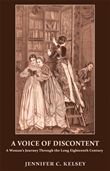 Jennifer C. Kelsey enjoyed a long career as a teacher prior to returning to university study on women’s history and women’s writing. Her book, A Voice of Discontent: A Woman’s Journey Through the Long Eighteenth Century (2009)
Jennifer C. Kelsey enjoyed a long career as a teacher prior to returning to university study on women’s history and women’s writing. Her book, A Voice of Discontent: A Woman’s Journey Through the Long Eighteenth Century (2009)![]() is published by Troubadour
is published by Troubadour
Many of the texts by women writers of this period can be found on-line at Project Gutenberg.





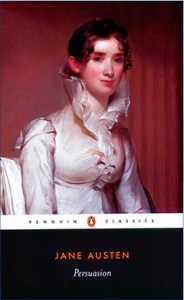




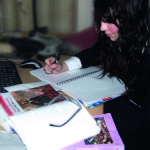

To Jennifer C. Kelsey
Thank you for your article. I read it a s part of my investigation about British women who went to Colombia with the British Legion and fought for the independence of the South American countries from Spain at the beginning of 19th century. So little is known about their lives and I’m trying to give them their voices in the form of a historical novel.
Patricia Diaz